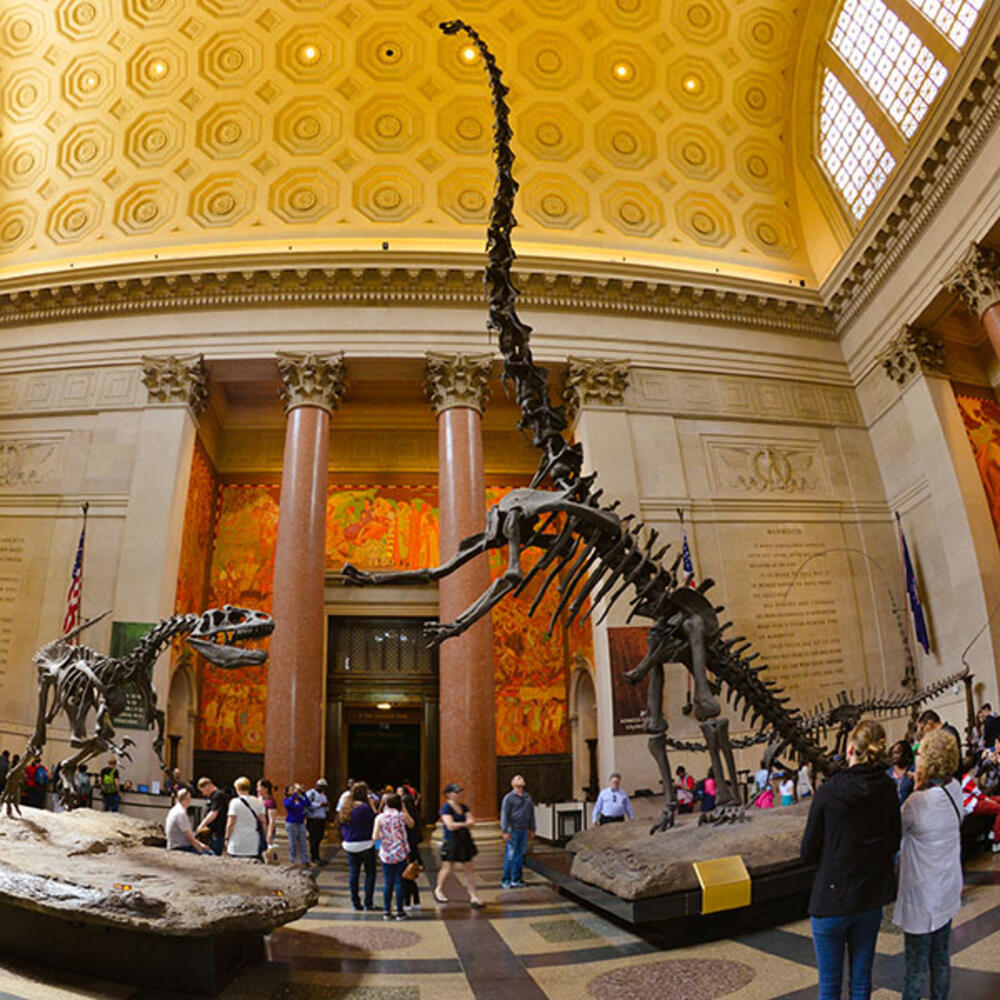Hall of Vertebrate Origins
The Hall of Vertebrate Origins traces the evolution of vertebrates, or animals with backbones, back more than 500 million years. Explored here are groups within the vertebrate family that exhibit crucial physical developments, including animals with jaws (gnathostomes), limbs (tetrapods), openings in the palate (sauropsids), openings in front of the eye on the muzzle (archosaurs), and watertight eggs (amniotes).
The Hall of Vertebrate Origins displays some 250 fossil specimens of the earliest vertebrates, animals that lacked a fully developed backbone but had a distinct head with a braincase; fishes, the most diverse group of vertebrates today; amphibians and their extinct early relatives, the first vertebrates to walk on land; crocodiles, turtles, lizards, snakes, and their relatives, the first animals to live their lives entirely on land; giant marine reptiles such as plesiosaurs, mosasaurs, and ichthyosaurs; and flying reptiles known as pterosaurs, the first flying vertebrates.
This hall also features several exhibits that allow visitors to touch the fossilized remains of long-extinct animals. These “touch fossils” include a 100-million-year-old fish; the tooth of one of the largest sharks ever to have lived; and a vertebra from a marine animal known as a plesiosaur.
This hall is included with any admission.
Enjoy free tickets for General Admission, special exhibitions, giant-screen movies, planetarium shows, and more!
